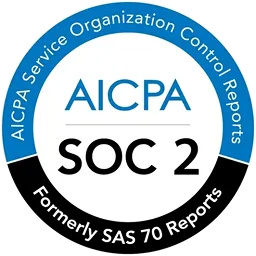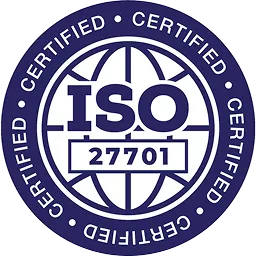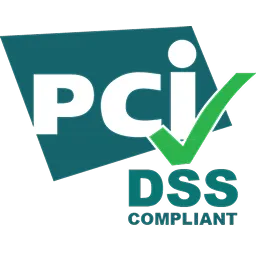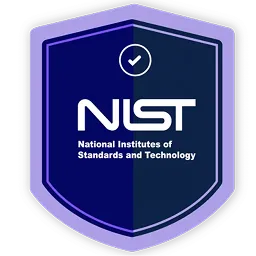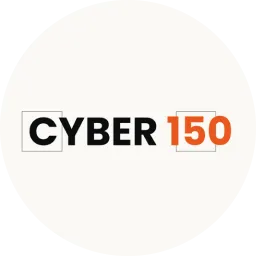Granting app access manually can be time-consuming and error-prone. Besides, it can delay operations and also compromise data integrity. Automating the app provisioning process is one way to avoid this problem. Along with simplifying IT operations, it enhances security by enforcing access controls across the organization. In this article, we'll explore several other benefits of automated provisioning.
What exactly is automated provisioning? It's a method that automates the process of granting and managing user access to apps, systems, and data within an organization.
But where exactly did the need for automated provisioning emerge from? As organizations expand, they tend to hire more employees and adopt an increasing number of SaaS apps. However, granting various app access to multiple employees becomes tedious to manage. This consumes significant time and introduces complexities that disrupt the provisioning process.
So, this is where automated provisioning emerged as a strategic solution, empowering your team with increased efficiency and productivity. They no longer have to go through the hassle of provisioning manually, freeing up their time for more important tasks.
However, that's not all; automated provisioning extends beyond simply streamlining workflows. It provides a comprehensive range of benefits, enlightening us with its potential to transform our operations. So, let's explore these benefits in detail one by one.
Major Benefits Of Automated Provisioning
Below mentioned are some of the major benefits that automated provisioning offers:

1. Reduces Manual Errors
One of the primary advantages of automated provisioning is its ability to significantly reduce manual errors inherent in traditional provisioning processes. Manual provisioning often involves repetitive tasks performed by human operators, which are susceptible to human error. These errors can range from misconfigurations to overlooked steps in the provisioning process, leading to system downtime, security vulnerabilities, and operational inefficiencies.
Automated provisioning minimizes the reliance on manual intervention, thereby reducing the likelihood of errors. By implementing predefined templates, scripts, or workflows, organizations can ensure consistency and accuracy in provisioning tasks across their IT infrastructure. Automation tools can execute these tasks with precision, eliminating the risk of human oversight or mistakes.
For instance: When a new employee joins the company, their information needs to be entered separately into various systems, including HRMS, project management tools, etc.
Without automation, this would typically involve manual data entry, leaving room for human errors such as typos in email addresses.
So, with automated provisioning, this process becomes much seamless. How? The system is set up to pull the necessary information directly from the HR database and automatically updates the relevant employee data across all systems. How does it help?
- It ensures that the employee's name, role, department, and email address are accurately transferred to each application without any manual intervention.
- It further nullifies the chances of errors and enhances the efficiecy of your IT team.
Moreover, automated provisioning facilitates the enforcement of best practices and compliance standards throughout the provisioning process. It can validate configurations against predefined policies and standards, flagging any deviations or inconsistencies for remediation. This proactive approach not only reduces the occurrence of errors but also enhances the overall security and compliance posture of the organization.
Overall, by reducing manual errors, automated provisioning enhances operational reliability, minimizes downtime, and improves the quality of service delivery. Organizations can achieve greater efficiency and confidence in their IT operations, allowing them to focus on strategic initiatives rather than firefighting errors and issues stemming from manual provisioning processes.
2. Speeds Up The Provisioning Process
Manually provisioning each employee can take a lot of time, causing delays. So what automated provisioning does is it speeds up the provisioning process by replacing manually managed workflows with automated ones.
These automated workflows run automatically when the your IT team triggers specific actions.
For instance, your team can set up a workflow for new finance department employees. Upon onboarding, this workflow automatically grants them access to essential finance applications like Spendflo, Vendr, and SpendHQ with just a few clicks.
This enables your team to provision multiple employees at the same time, eliminating the need to manage each employee individually. This not only saves a considerable amount of time but also expedites the entire process.
3. Minimizes Security Risks
There are instances where employees mistakenly receive access to certain SaaS apps or data that they shouldn't have. This could happen due to oversight during the access provisioning process.
However, if, by chance, these employees' accounts are compromised, it can create chances for potential data breaches, putting sensitive information at risk.
In such scenarios, automated provisioning steps in as a crucial preventative measure.
It ensures that each employee is only granted access to the specific SaaS apps, data, and systems necessary for their respective roles within the organization.
This means that employees can only access the apps relevant to their job functions, minimizing the likelihood of unauthorized access or accidental exposure of sensitive information.
4. Reduces Onboarding Cost

Manually provisioning users is often costly due to the multitude of steps involved, including verification and authentication processes. Each of these steps requires thorough attention to detail, leading to delays.
However, with automated provisioning organizations save valuable time and resources spent on laborious manual tasks by automating the entire process. This enables your team to redirect their focus towards more technical tasks that require their expertise, such as cloud transformation or executing other critical projects.
Furthermore, setting up automated provisioning systems that link HR and IT departments can further enhance efficiency and cut down operational costs.
So, when your team (HR) inputs a new hire's details into the HRMS, their digital identity is automatically integrated with the central directory.
This automated transfer minimizes the need for manual intervention from IT team, streamlining the onboarding process. This also helps ensure new users gain access to required resources promptly and accurately.
5. Increases Transparency & Provides Complete Visibility
Automated provisioning provides your team with a complete understanding of which tools each employee can access and how they are utilizing this access. This visibility is crucial for ensuring that resources are allocated efficiently and that sensitive information remains secure.
Moreover, manual provisioning processes can introduce inefficiencies and risks.
Without automated systems in place, there is often a lack of transparency regarding which tools employees are using and who has access to them.
This makes it difficult for managers to track access and ensure that permissions are properly managed. Additionally, manual processes are susceptible to errors and delays, which can further hinder productivity and compromise security.
So, to overcome such situations, automated provisioning provides a centralized view of user access and identities.
- With the help of this visibility, your team can easily monitor access permission levels, track changes, and make sure that employees have the resources they need to perform their jobs effectively.
- This not only enhances efficiency but also strengthens security measures by ensuring that access privileges are consistently enforced across the organization.
Overall, automated provisioning plays a vital role in streamlining operations, enhancing security, and promoting transparency within an organization.
Although automated provisioning does offer various benefits, without the right solution in place, organizations may not fully realize its potential or may encounter unexpected challenges.
So, let's quickly go through how the right solution can make a difference.
Avail the Benefit of Automated Provisioning at your Organization via Zluri
By now, you must have understood that automated provisioning is the definitive solution to overcome the challenges posed by traditional manual methods. Yet, the effective implementation of automated provisioning depends heavily on choosing the right solution. Otherwise, there won't be any point in investing time and resources into transitioning from the manual process.
Zluri is one such platform that you can consider when it comes to availing the benefits of automated provisioning. But why? Well, because of these features:
- Integrates With HRMS
Zluri seamlessly integrates with your HRMS and updates all the user records in the centralized dashboard. This way, your team no longer has to go back and forth to verify each individual profile manually and grant them access to apps and data.
Also, with every change in an user’s role or requirements, this integration automatically updates the data, allowing your team to adjust access permissions accordingly.
This integration saves your teams time and minimizes the chances of granting misaligned/incorrect access. The data they receive is completely accurate and always up-to-date, unlike manual data-gathering methods.
- Zero Touch Provisioning
Zluri is an access management solution that offers zero-touch provisioning features. This feature allows your team to create an onboarding workflow that automates the entire provisioning process with just a few clicks. As a result, this automation significantly enhances your IT team's productivity and efficiency by 10 times, streamlining operations and expediting tasks.
Also, it ensures that every newly onboarded employee is assigned the right level of access rights to necessary SaaS apps based on their attributes, such as role and department.
That, too, without making them wait for days; thus, they can hit the ground running from day one.
Note: your team can even create rules/triggers (when and then conditions) to automate specific actions like adding new employees to channels, groups, and projects.
- Enforces Access Control Policy
Zluri’s access management solution goes further in effectively managing provisioning by ensuring that employees do not hold excessive privileges throughout their tenure.
To ensure that, it enforces access control policies like (PoLP, RBAC, SoD, JIT). This enforcement of controls strengthens security and helps organizations meet stringent compliance regulations such as GDPR, SOC, SOX, and ISO-27001.
However, Zluri's access management capabilities extend beyond provisioning. It goes a step further by automatically revoking access for departing employees or those who no longer require access to applications and data. This proactive approach maintains a well-governed and secure access environment, safeguarding organizations' sensitive data from potential threats.
In short, with the right solution like Zluri, you can simplify the provisioning process, enhance your employee experience, maintain data security, and seamlessly adhere to compliances.
To learn more about Zluri's access management, book a demo now.
FAQs
1: How Does Automated Provisioning Solution Work?
Automated provisioning solutions create workflows that trigger actions for specific events (granting new employees access to apps and data based on their role). Also, it runs workflows on an ad-hoc basis to modify access if any change occurs in employees' needs and roles.
2: What Issue Does Automated Provisioning Solve?
Automated provisioning solves the issue of manual and labor-intensive tasks associated with granting and managing access to applications and data for employees within an organization. By automating these tasks, it streamlines the process, reduces errors, ensures consistency, and enhances security.
3: What Is The Difference Between Auto Vs Manual Provisioning?
The main difference between auto and manual provisioning lies in the method of granting access to resources. Auto provisioning is the process of automatically granting access to apps, while manual provisioning requires manual intervention to grant access, which can be time-consuming and prone to errors.









.svg)



